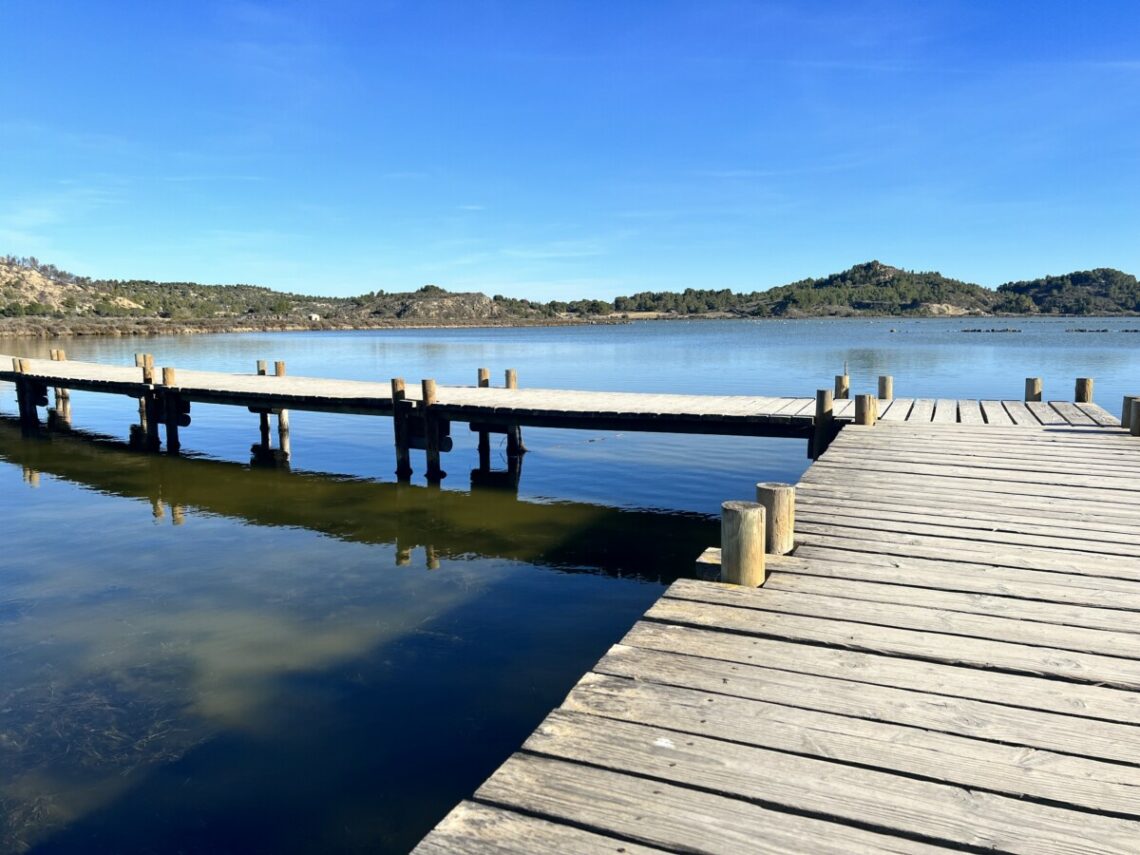
Walking on Water in Peyriac-en-Mer
Salt production in Peyriac-en-Mer was shut down in the 60s because the town was poorly situated for transporting salt. Neither roads nor railways were close enough.
The coastal strip from Montpellier down almost to Spain is dotted with shallow lagoons between the Mediterranean Sea and the “inland.” Many of these lagoons still have active salt production, like in Gruissan and La Palme.

Now, the park is a nature area with hiking trails around the lagoons, and in many places, they’ve built wooden bridges on the old “piers” that were used to store salt before it was shipped out. This is both to preserve them and to make the area accessible to everyone. The entire lagoon is part of a nature reserve around Narbonne called Parc naturel régional de la Narbonnaise.
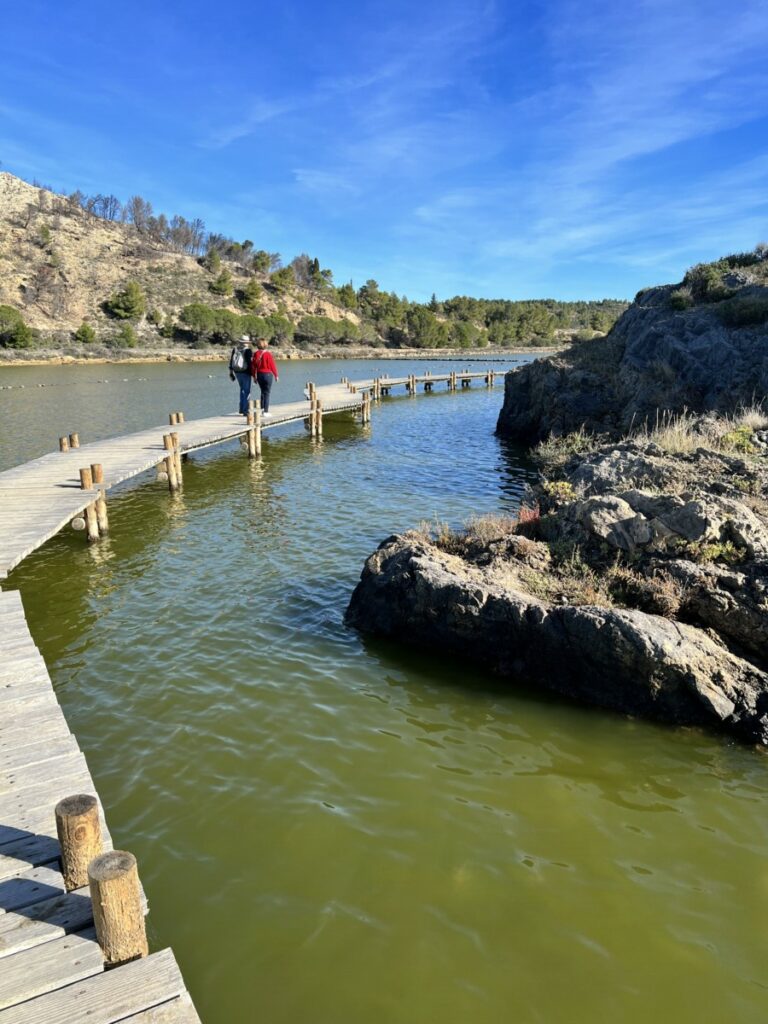
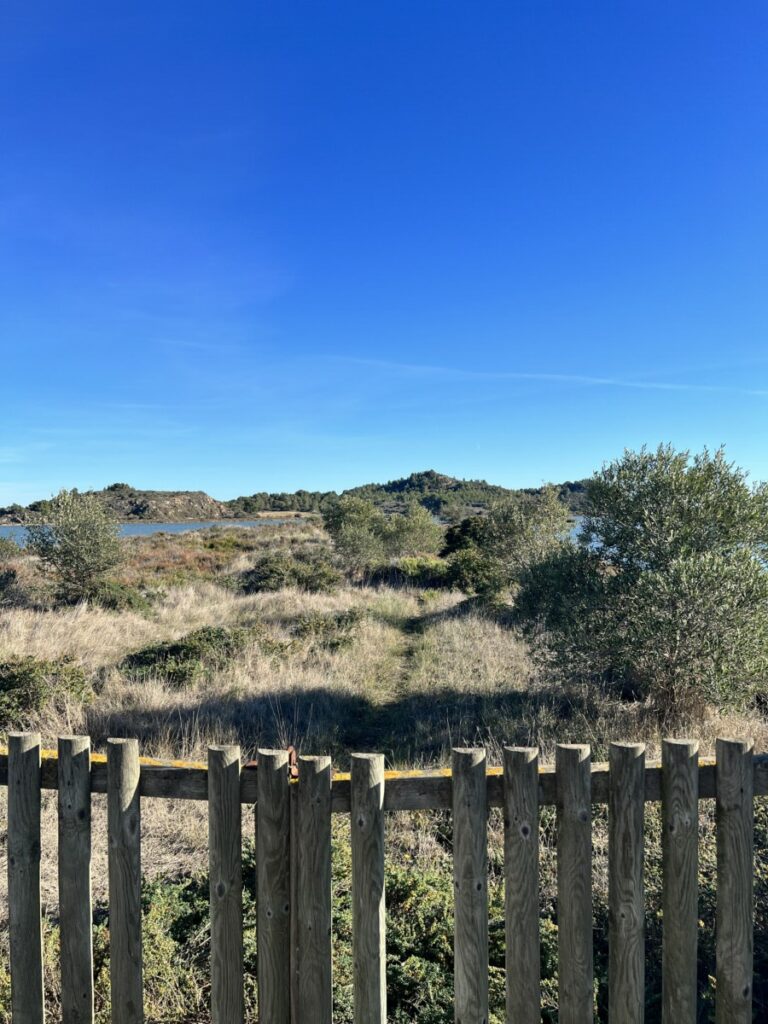
The reserve is rich in wildlife and birds, and since it’s always windy down here, it’s a favorite spot for kiting and surfing. There’s also other “wildlife” nearby, as the African animal park in Sigean is just south of Peyriac-en-Mer.

Nature has replaced the salt production
Peyriac-en-Mer is probably better known for hiking than extreme sports. The town has its own parking spots specifically for visitors going on hikes. It’s a very popular area. Just follow the signs to “guest parking.”
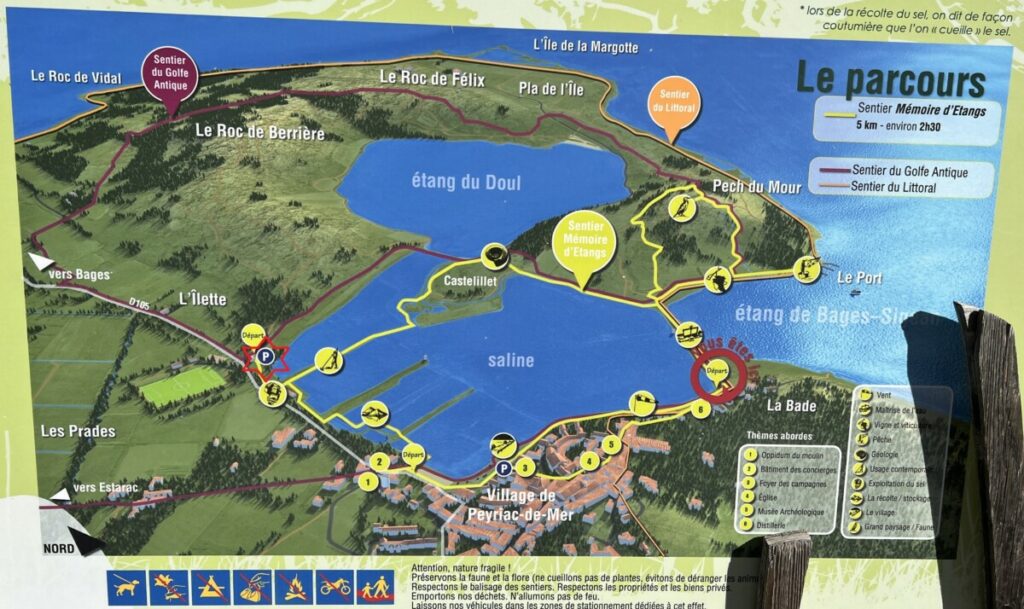
In brilliant sunshine and 20 degrees in mid-November, we walked for about an hour. It was fascinating to walk on water. The trails are pretty well-marked with distances, and there are maps showing where the different marked paths go.

There are also some “wild trails” that let you cross over a bit and either walk easily along the water on good gravel or asphalt roads or on slightly rougher trails up in the hills. From there, you get a great view of the lagoon and the town, and we could see quite far south as well. All the way to the neighboring town of La Palme, where salt is still produced.
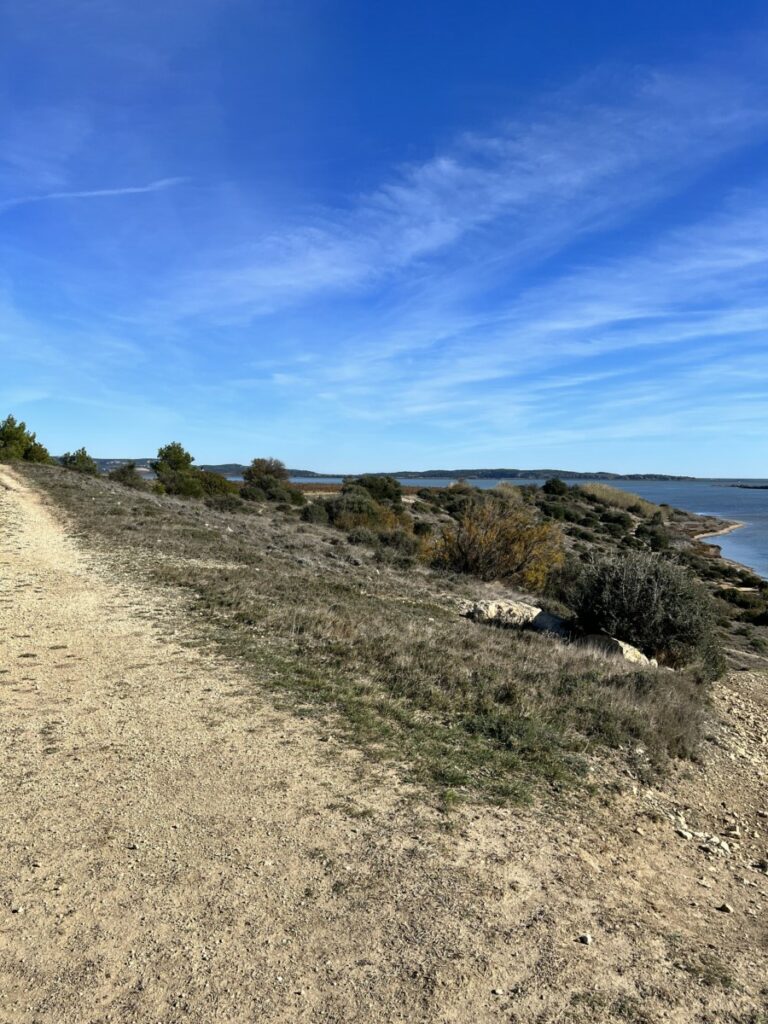
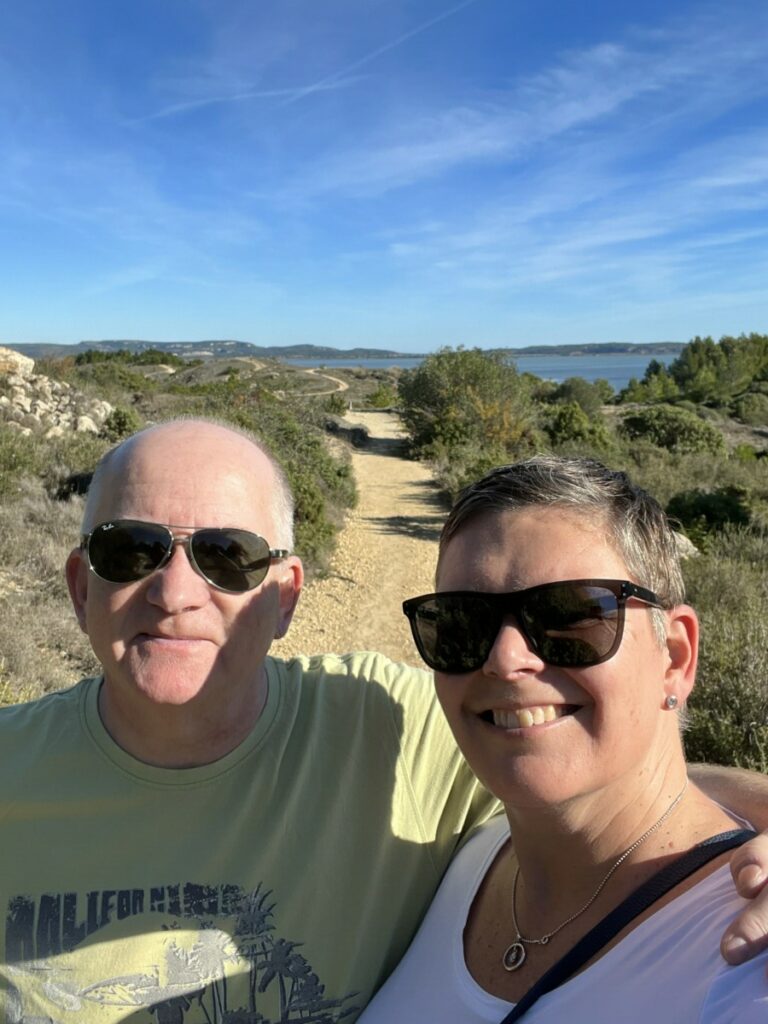
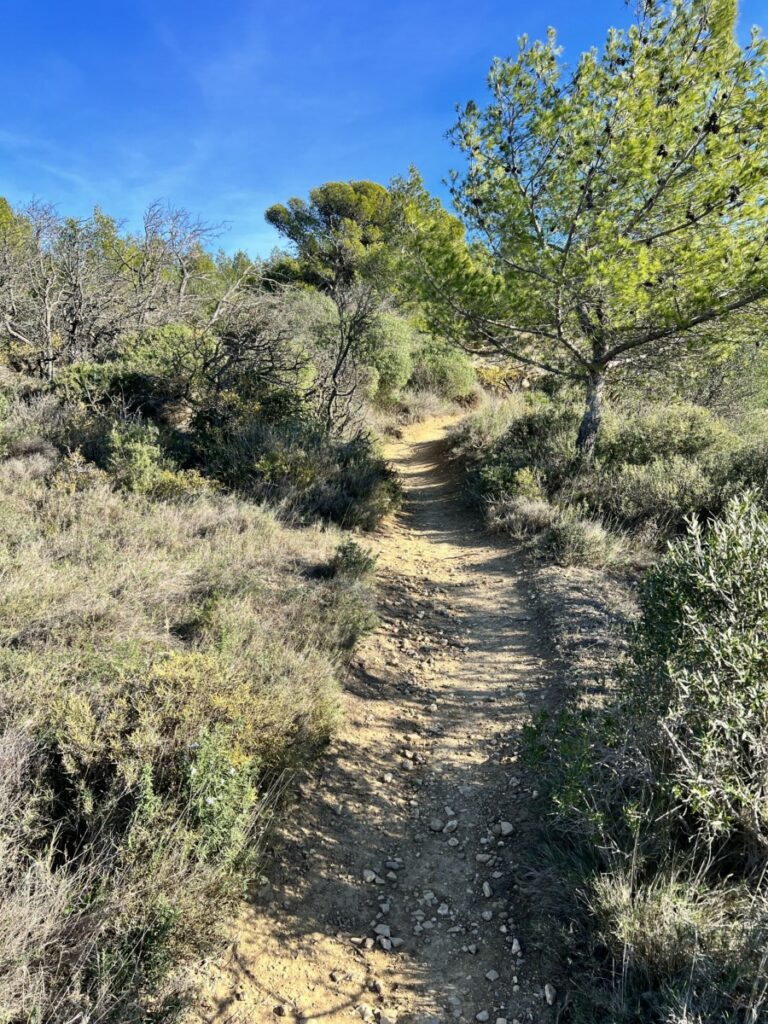
In addition to the “docs” which are now partially covered with wood to let us walk on them and to protect them, we saw many other remnants of salt production. Gates to open and close for the water intake were needed to regulate the flow. The point of the basins was that the salty water should evaporate, leaving only the salt. In order for that to happen they had to prevent more water from coming in.
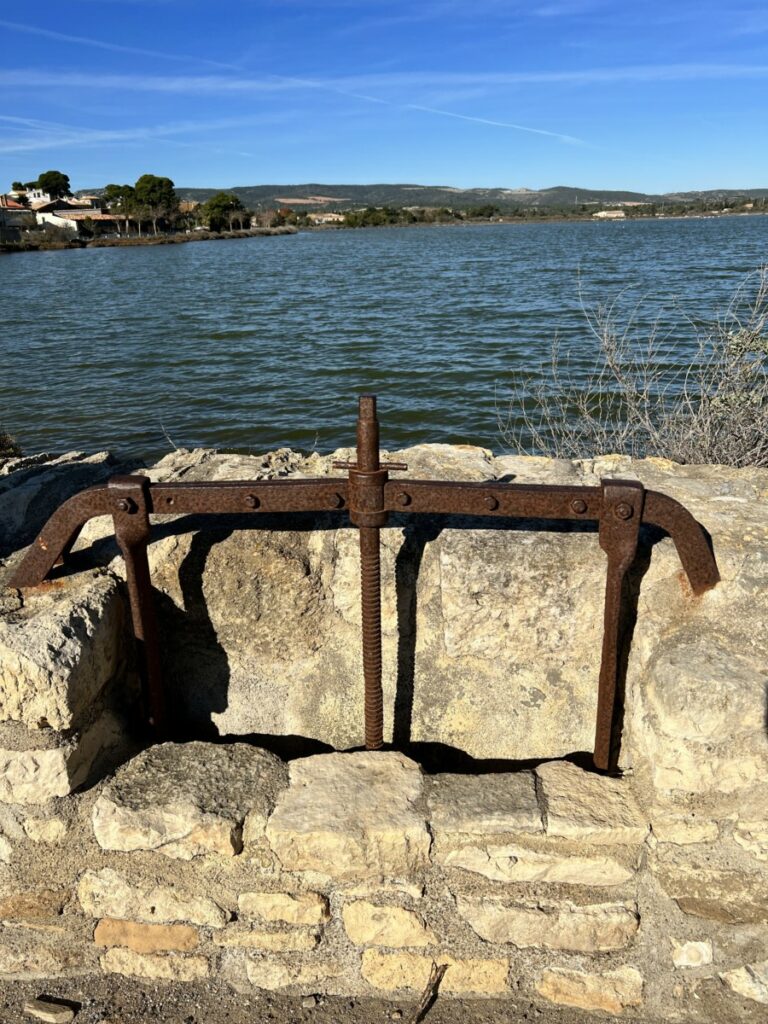
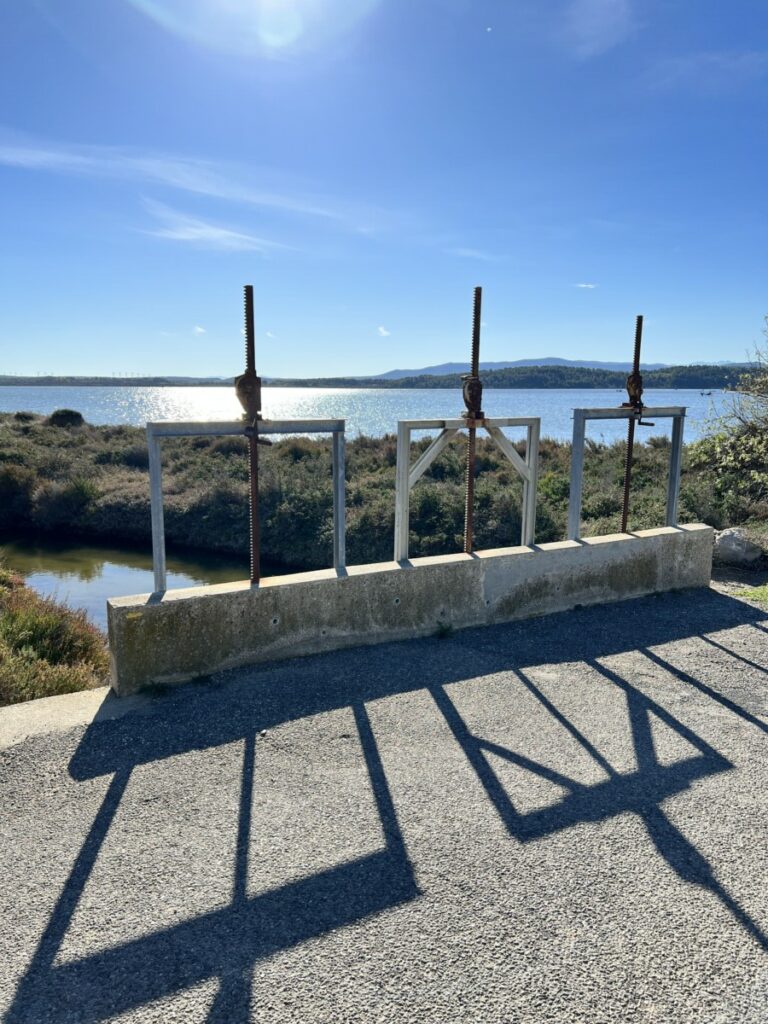
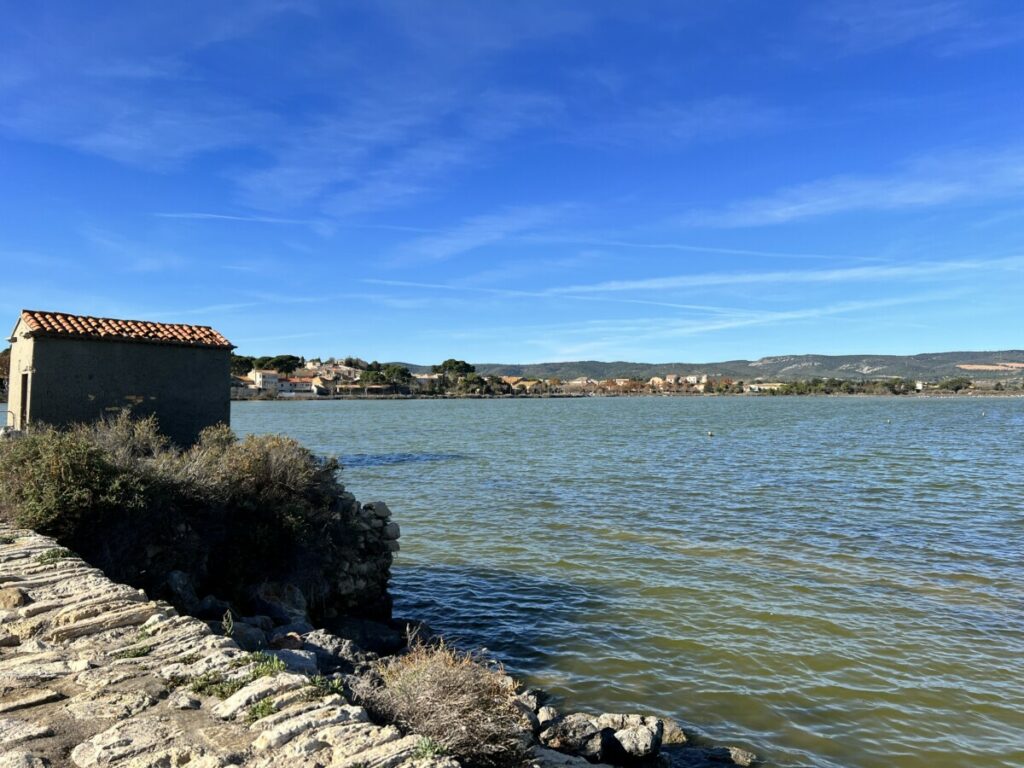
Nice town centre
The town itself is also cozy with several places to eat. They’ve clearly recently spruced up the square with an lovely flowersbeds. The lavender was even blooming in November.
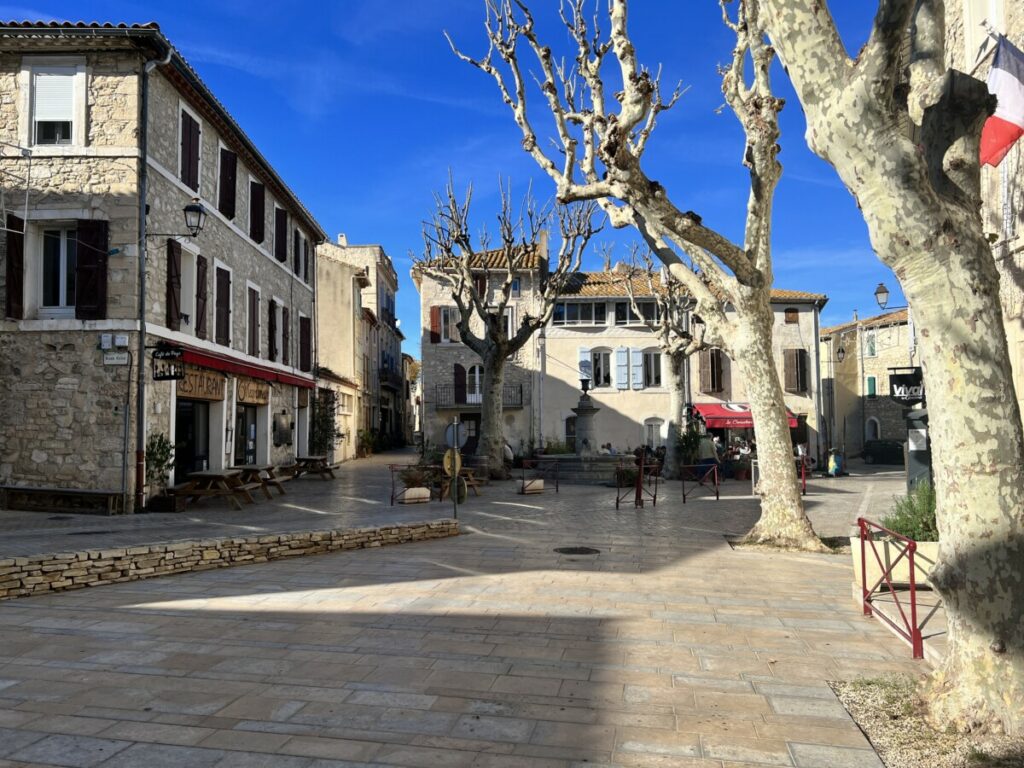
We had a simple salad for lunch in the sun. This little town had 4 restaurants that we saw, and 3 of them were open for Sunday lunch in November. Note that the pizzeria doesn’t take cards; it’s cash only. The town doesn’t have an ATM either, and the nearest one is in Narbonne! That’s a bit inconvenient for visitors, I’d say.
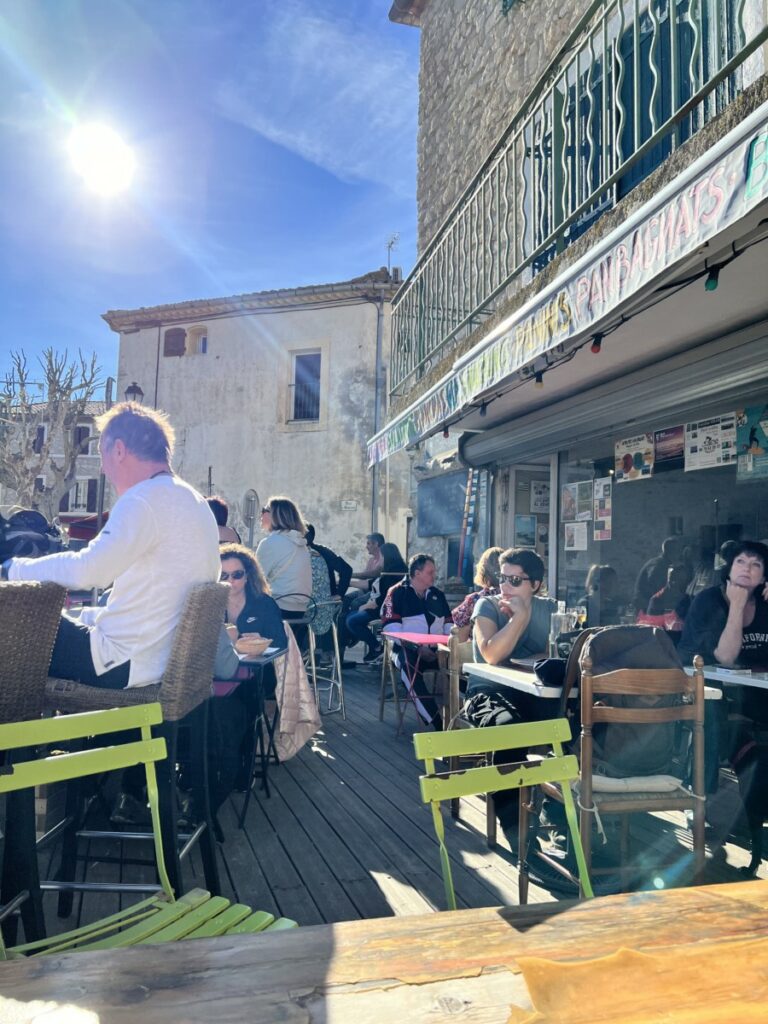
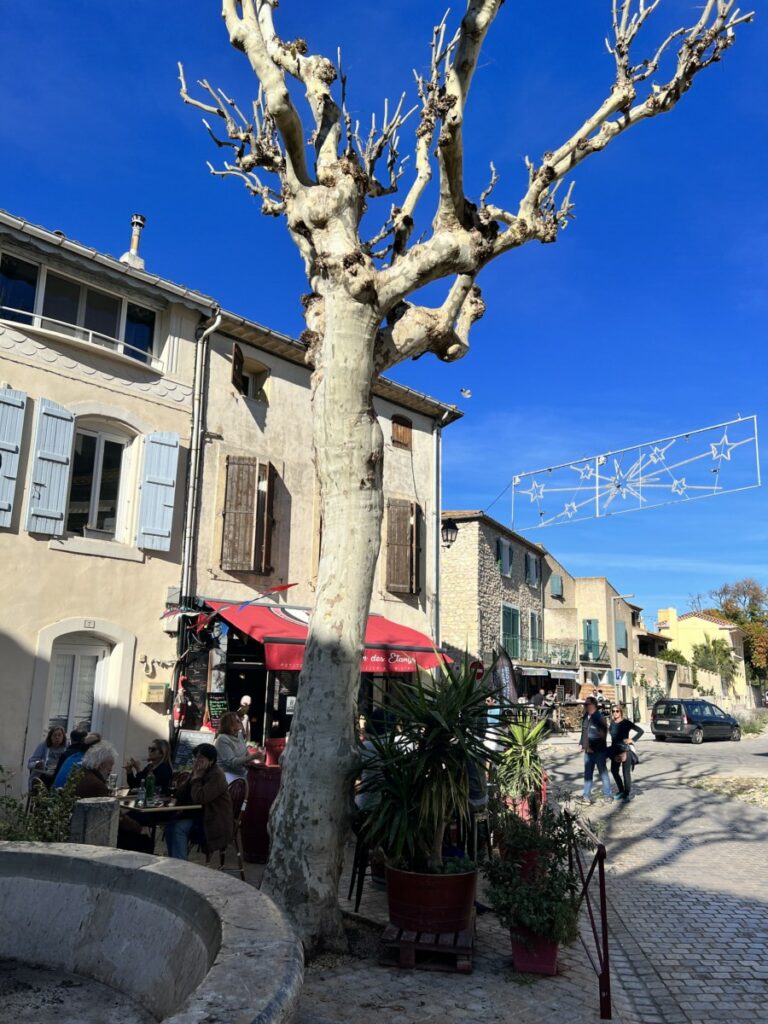
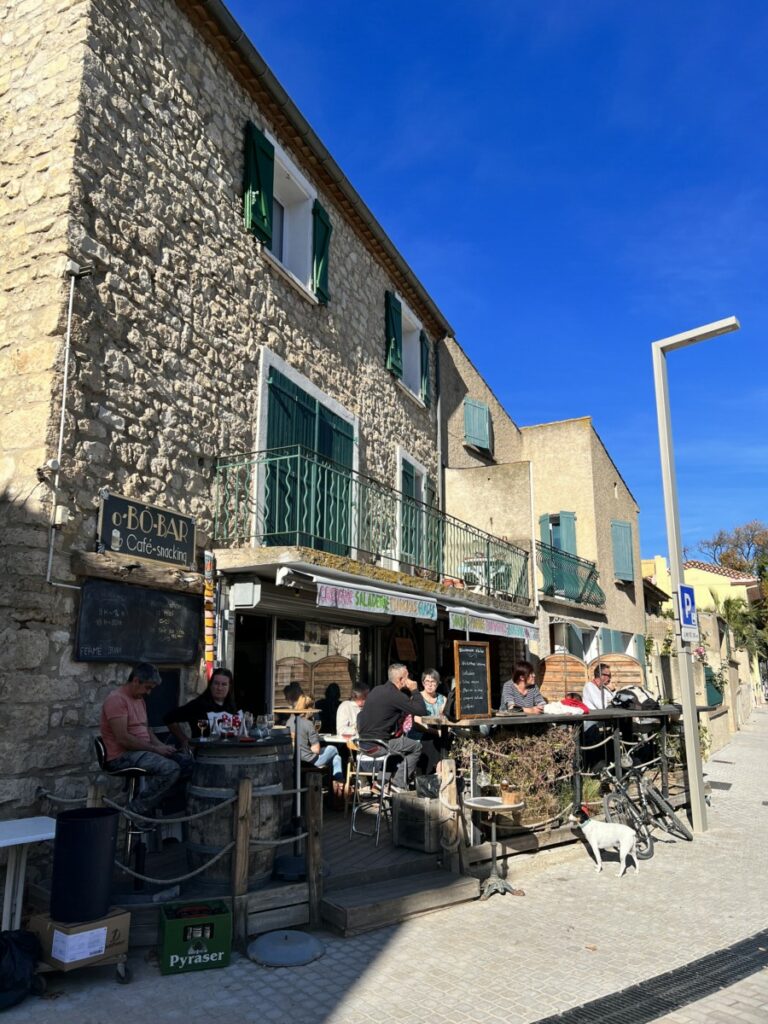
This was a lovely discovery and a great walk in nice weather.
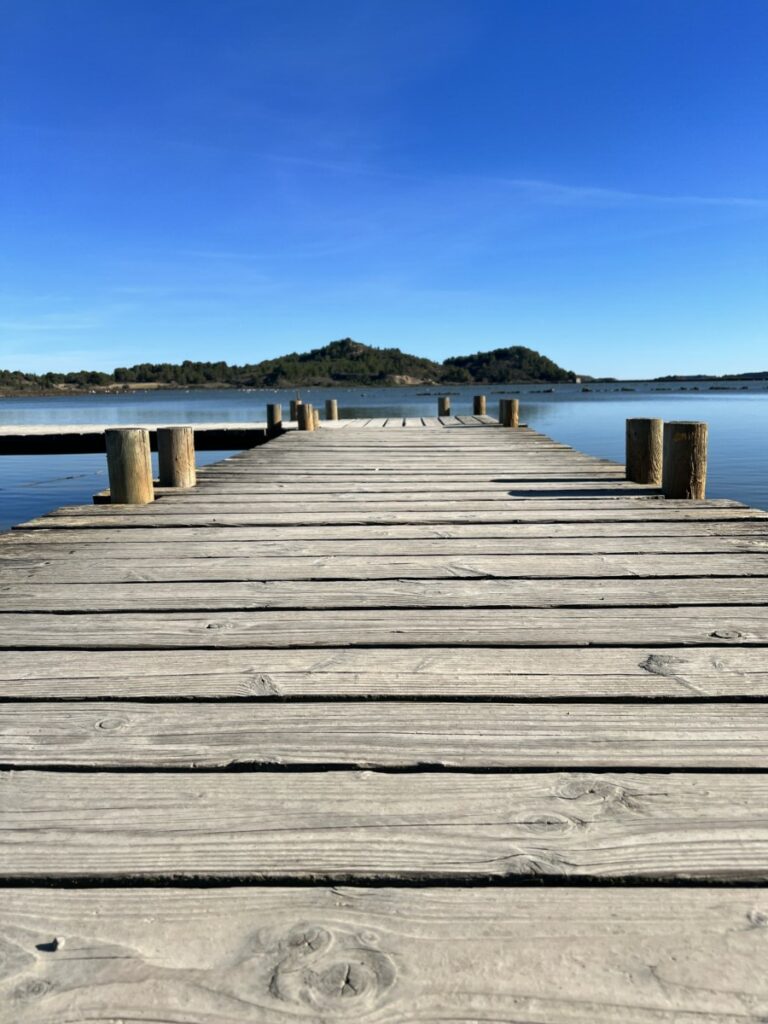
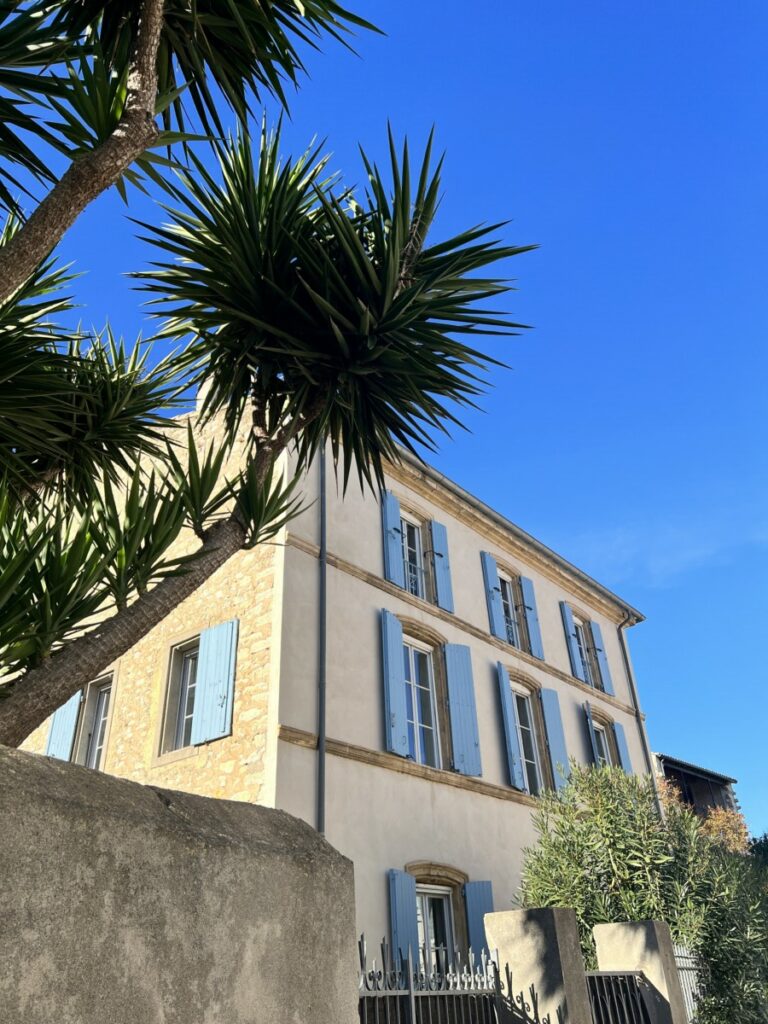
Feel free to follow me on Instagram, catrines.reiser, to see more of my little corner of France.

